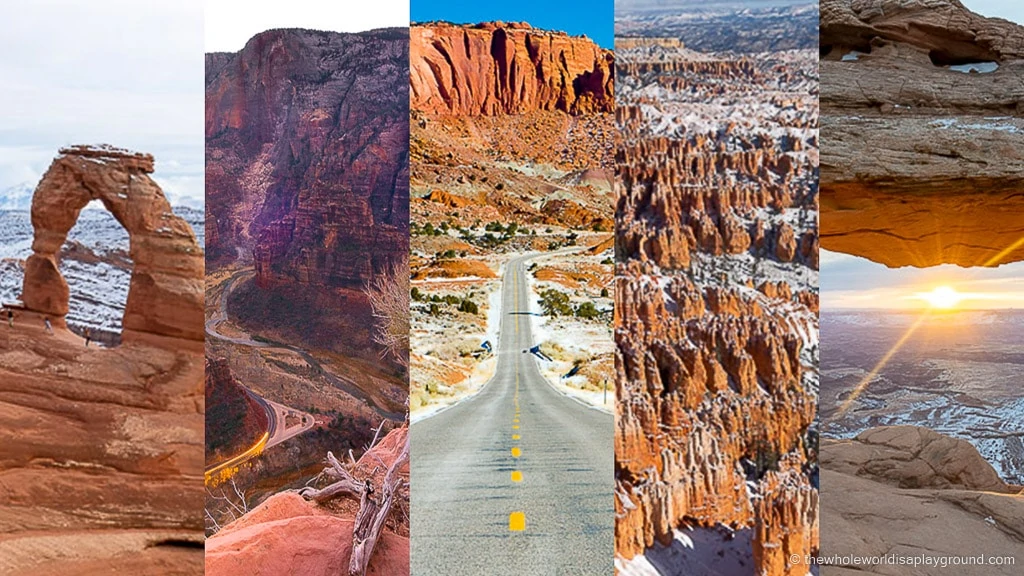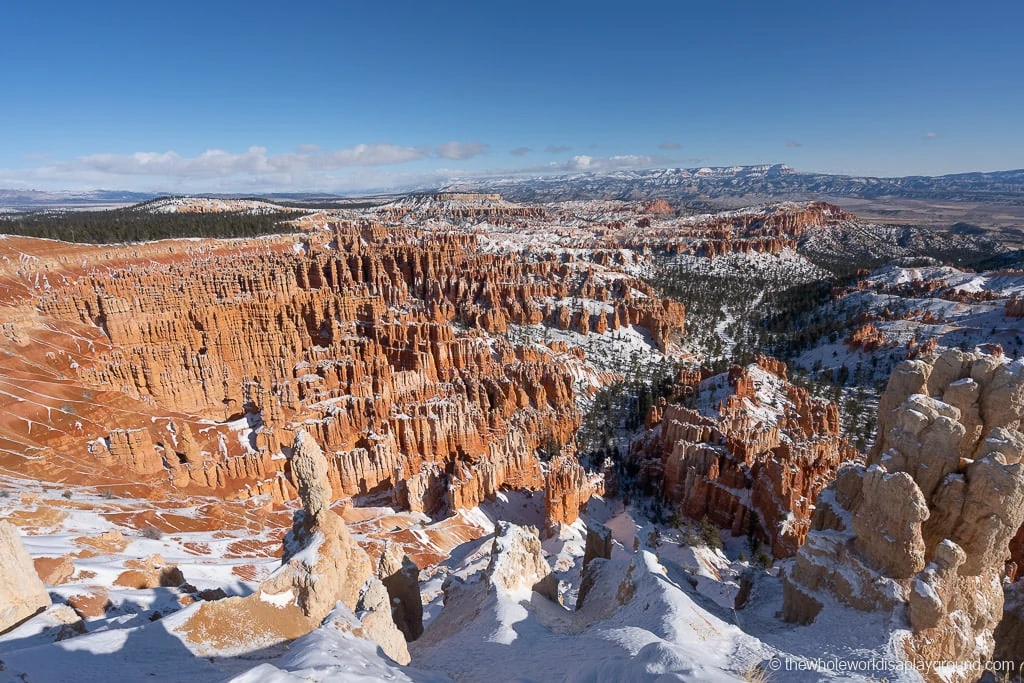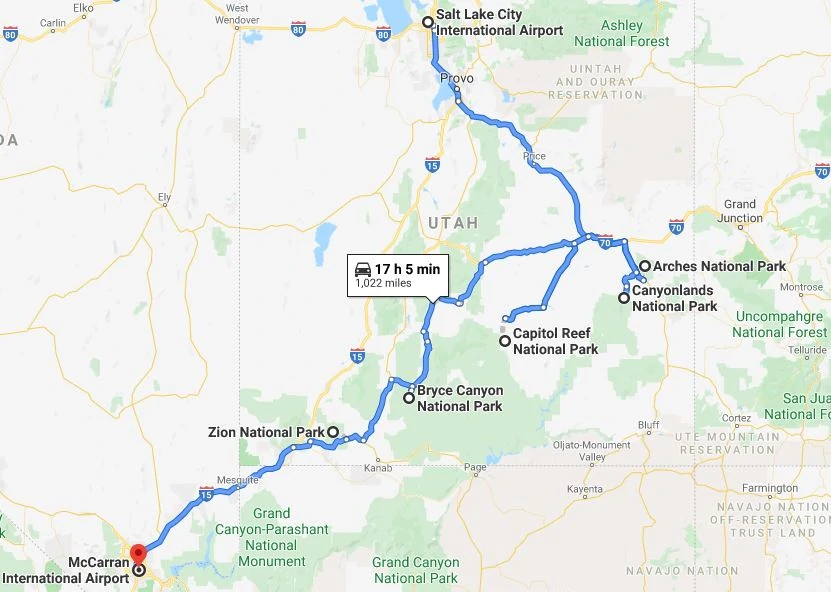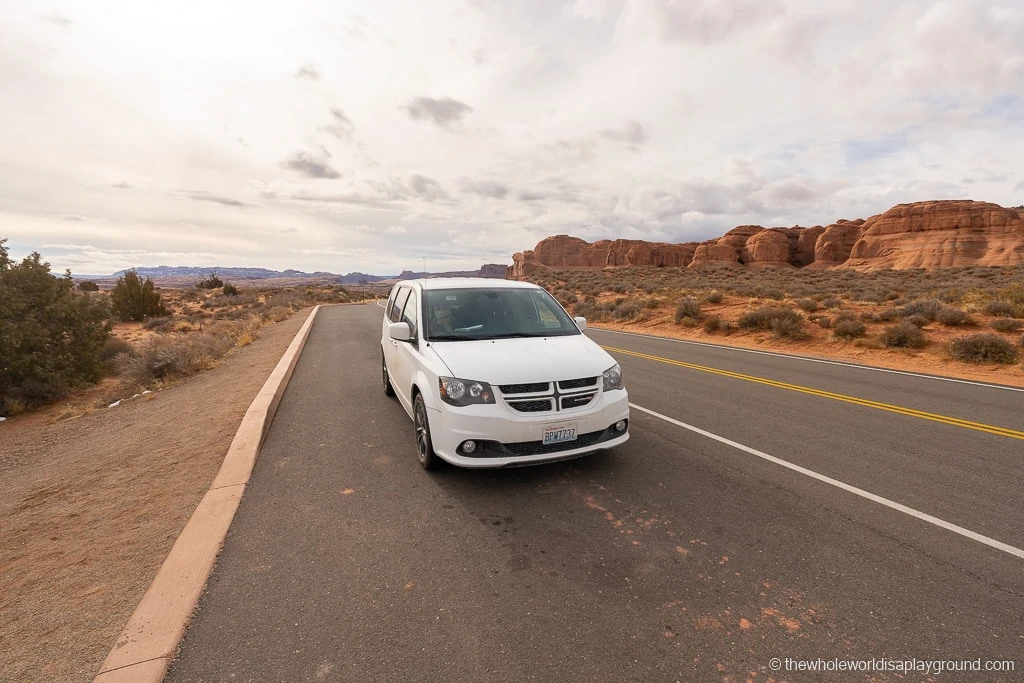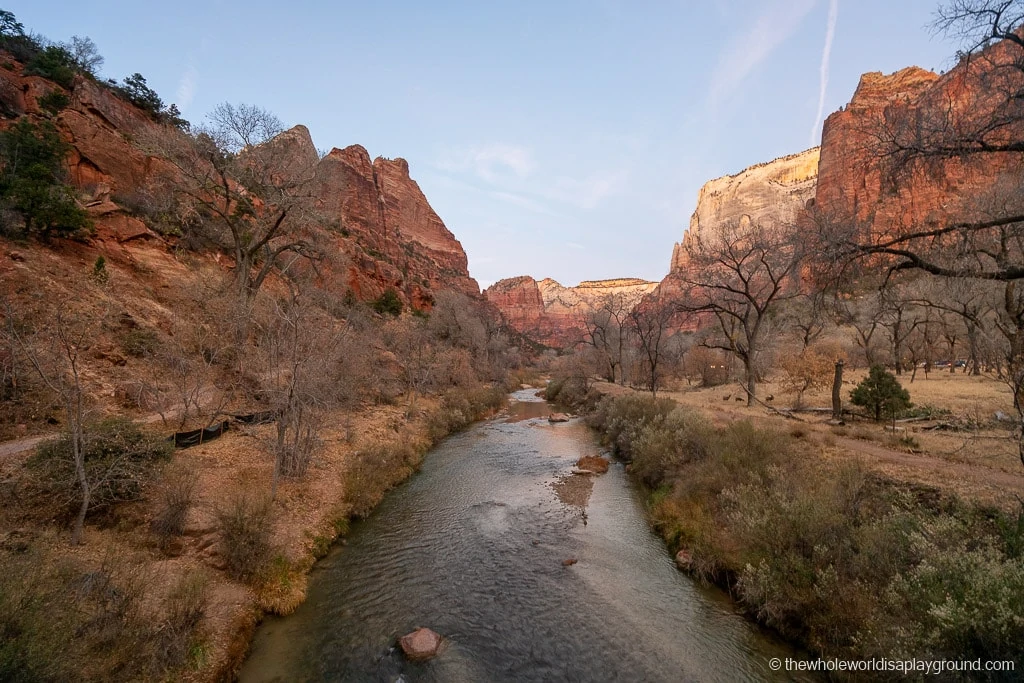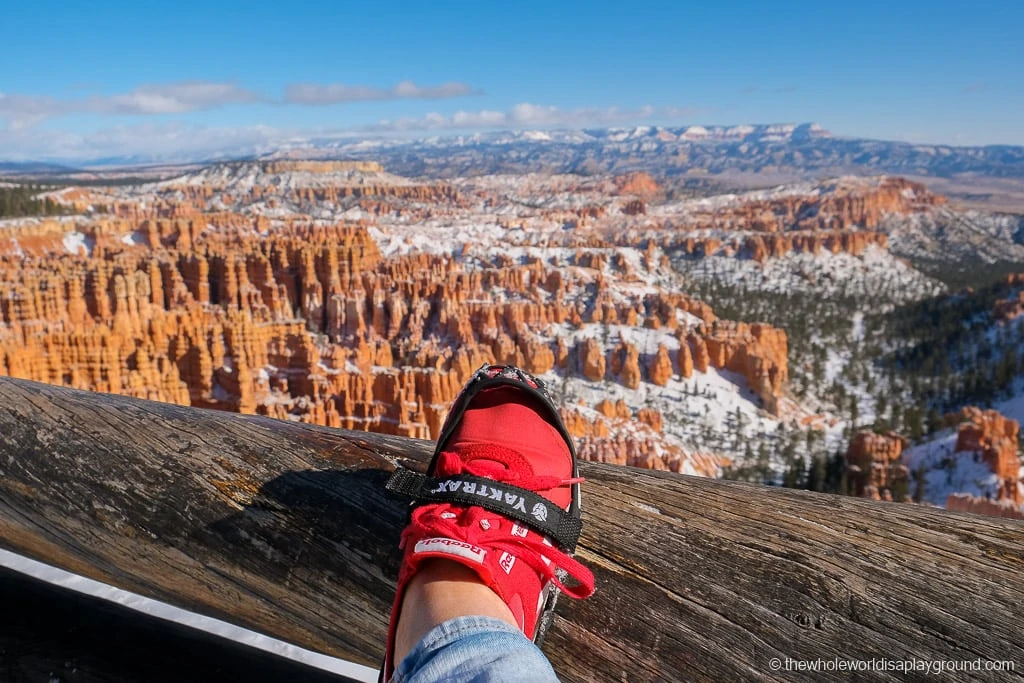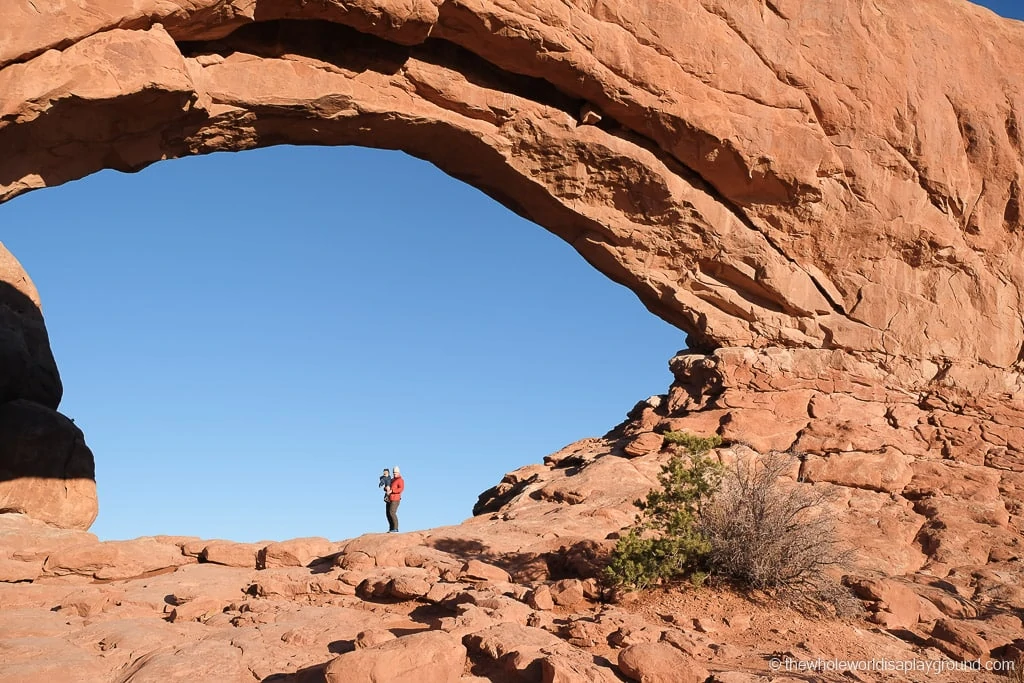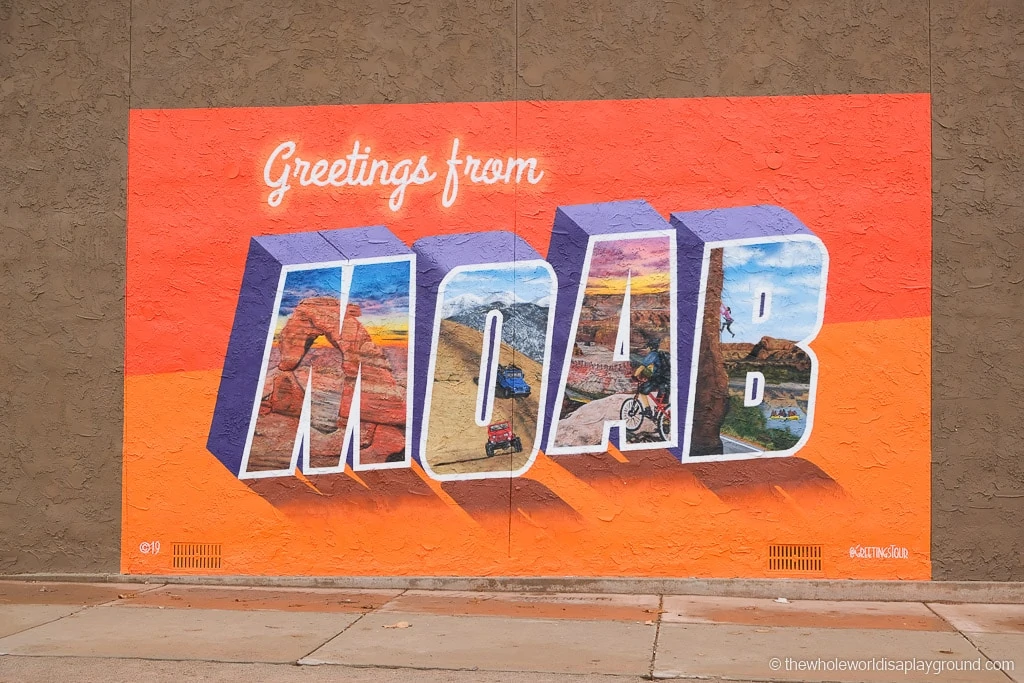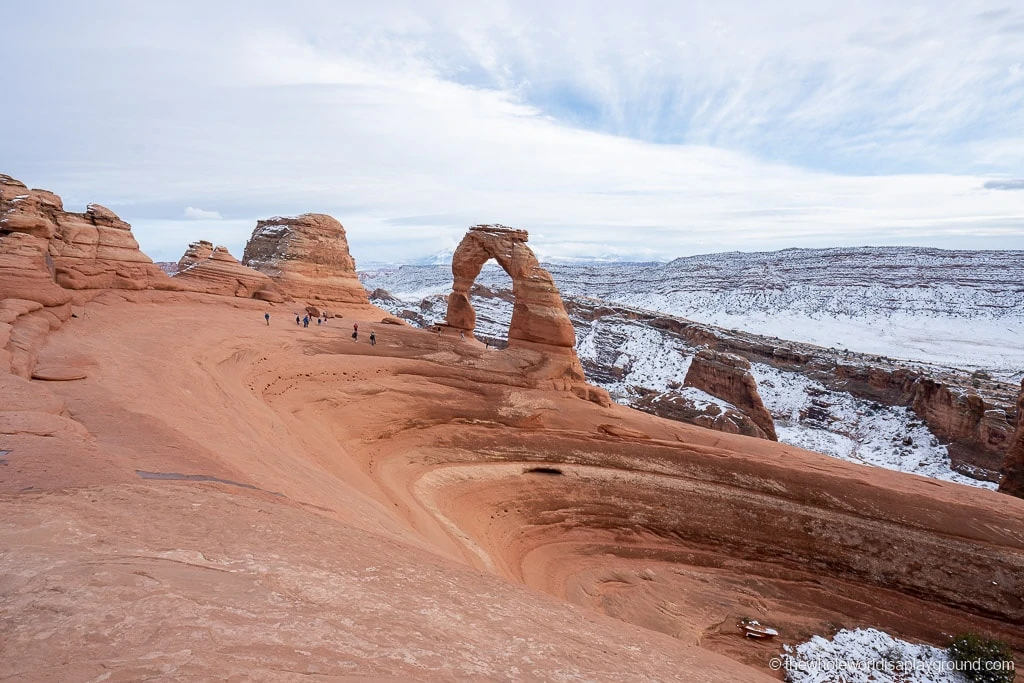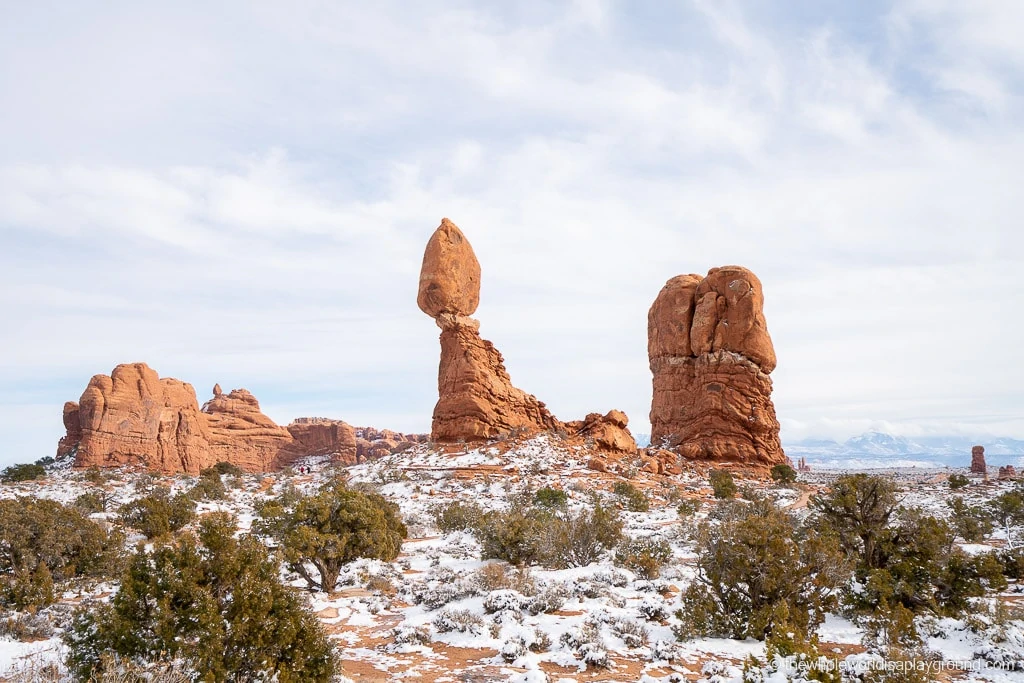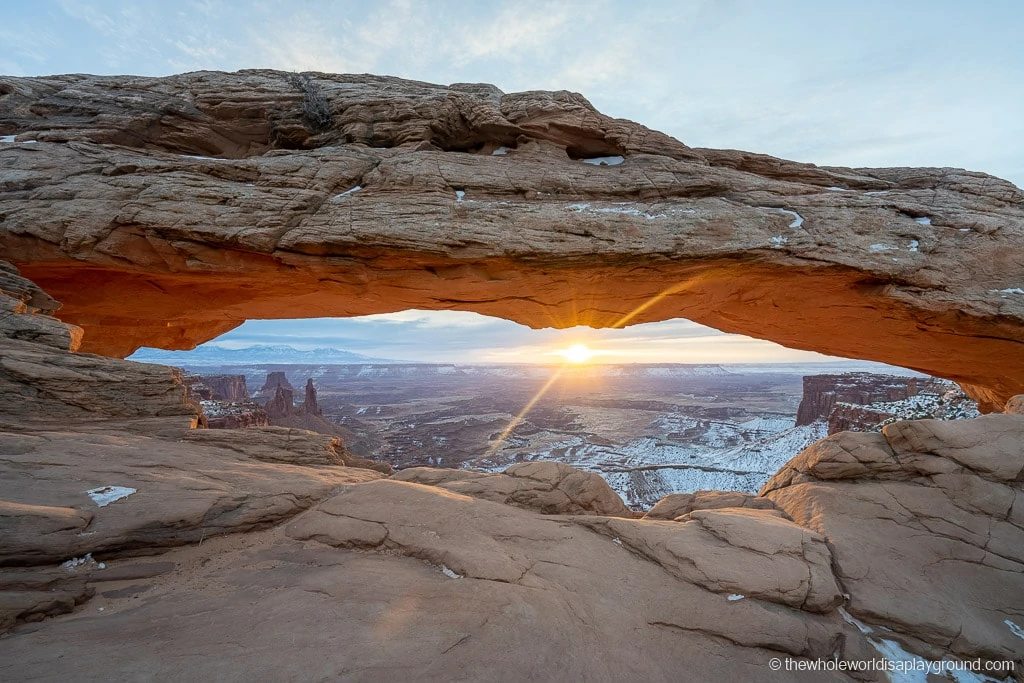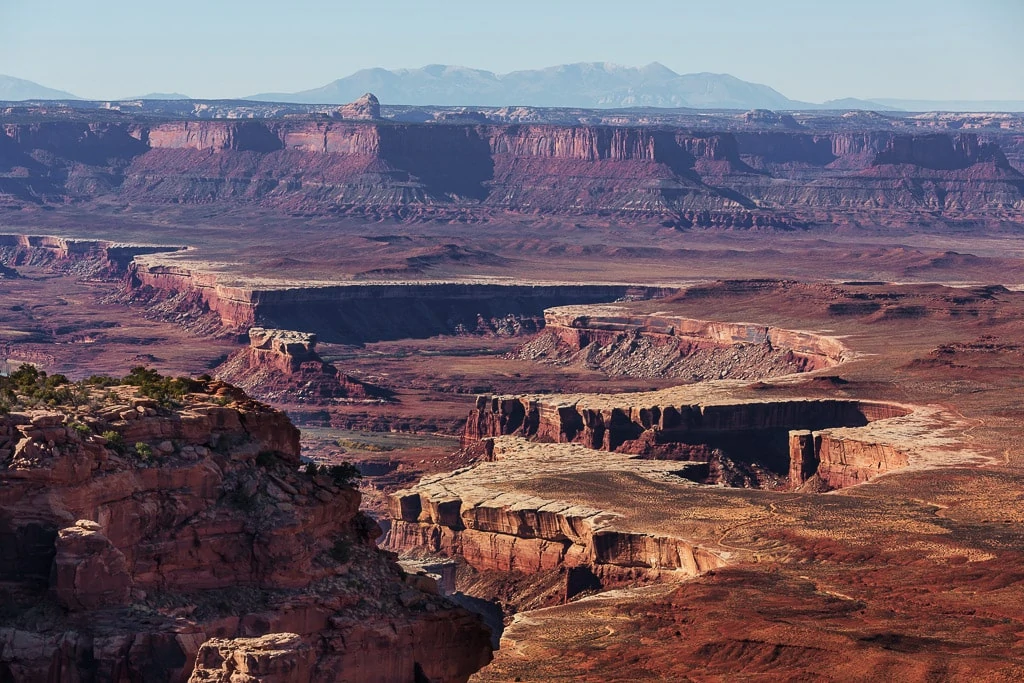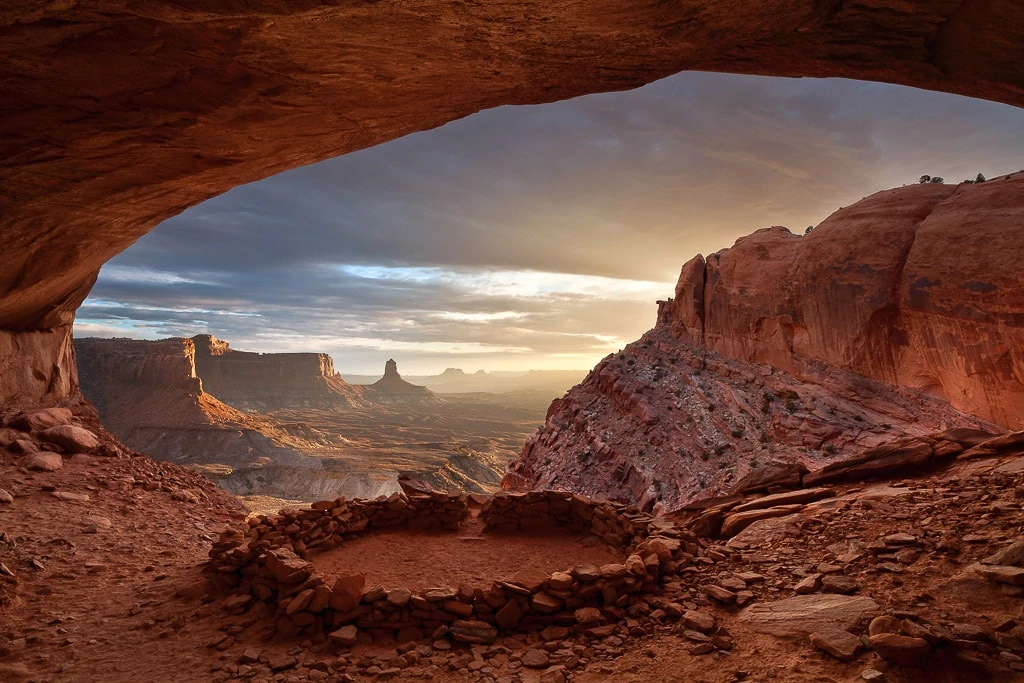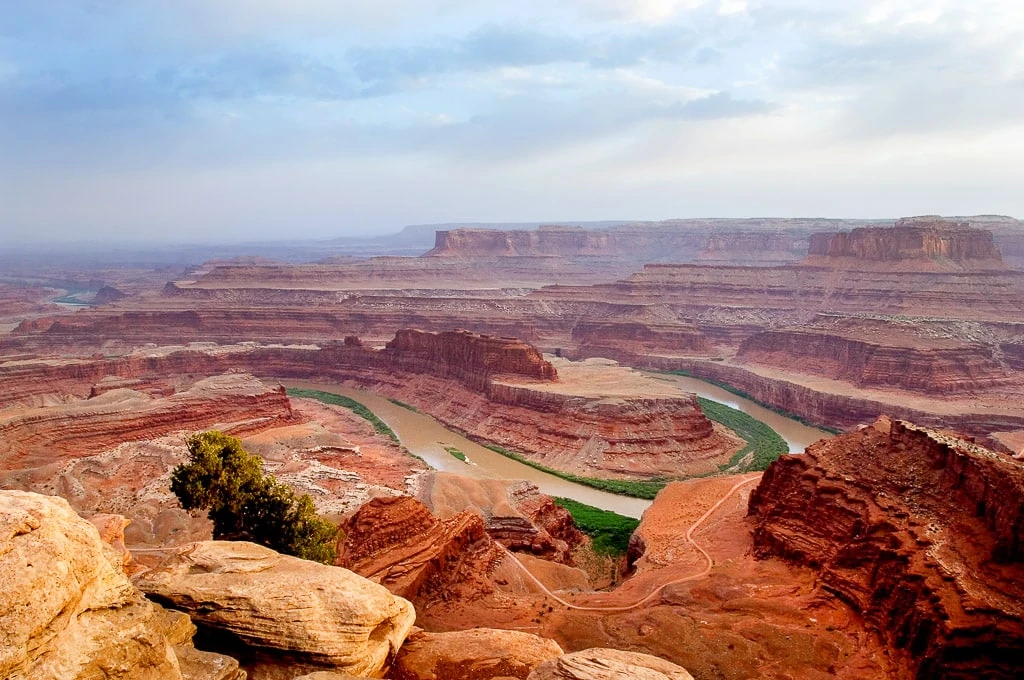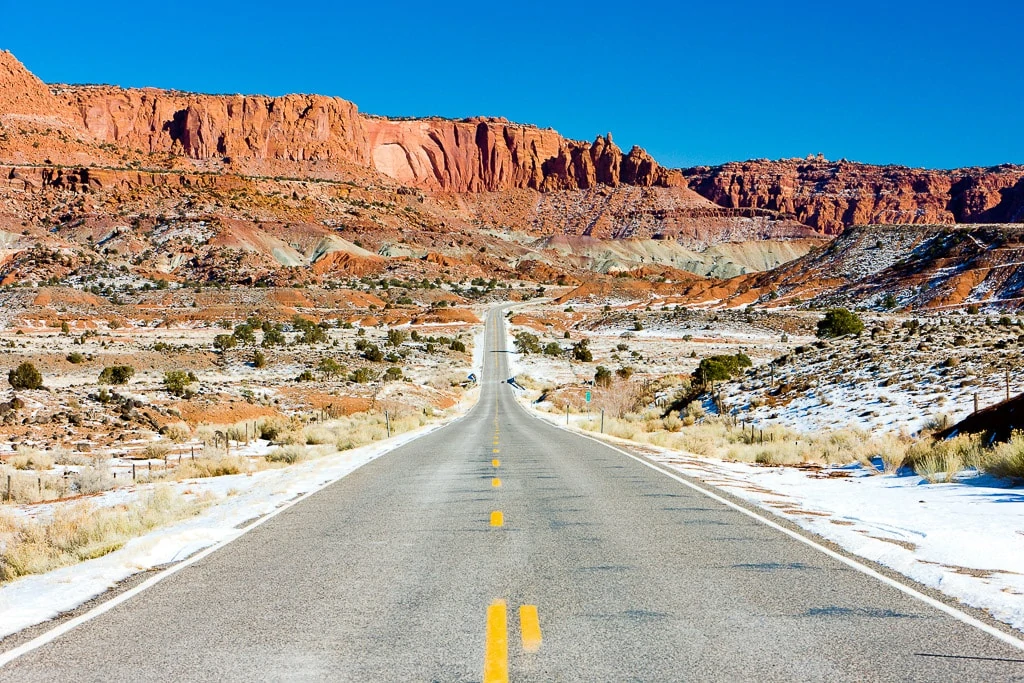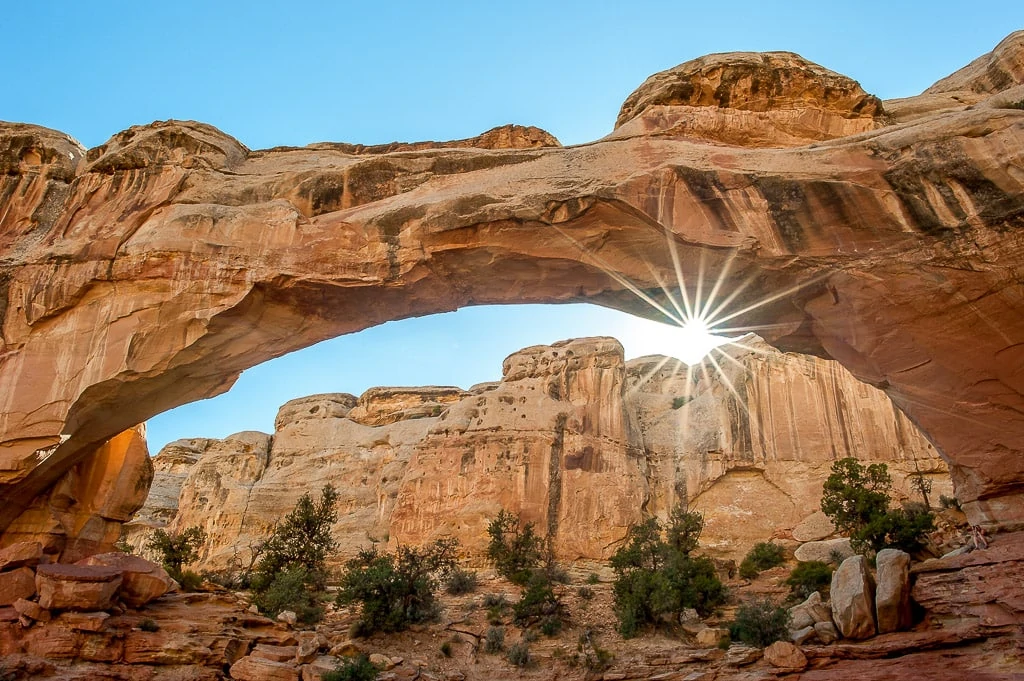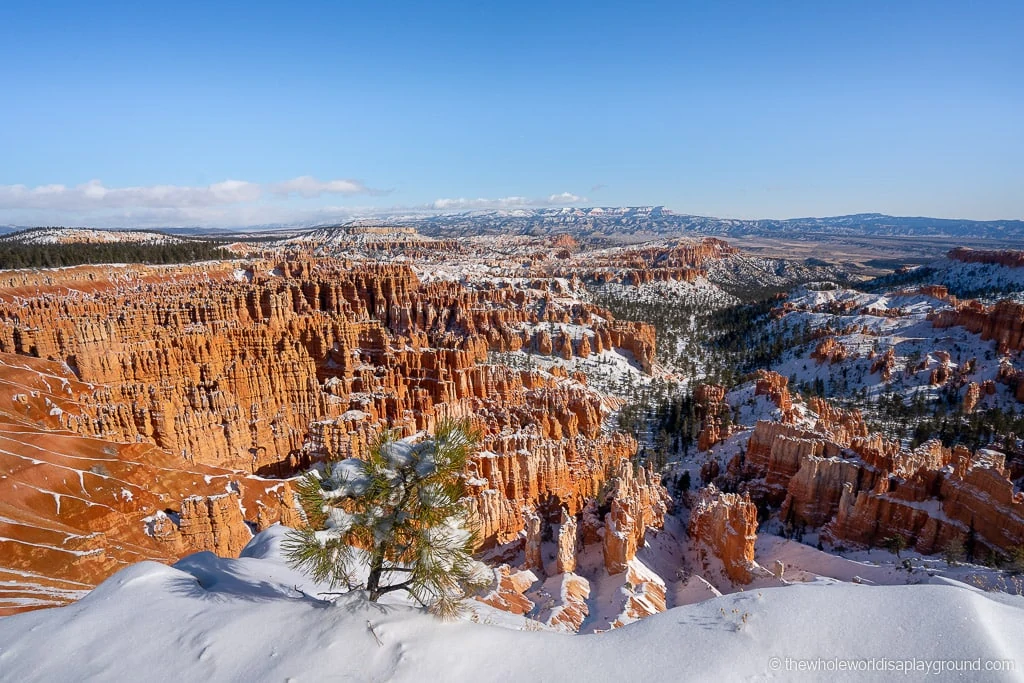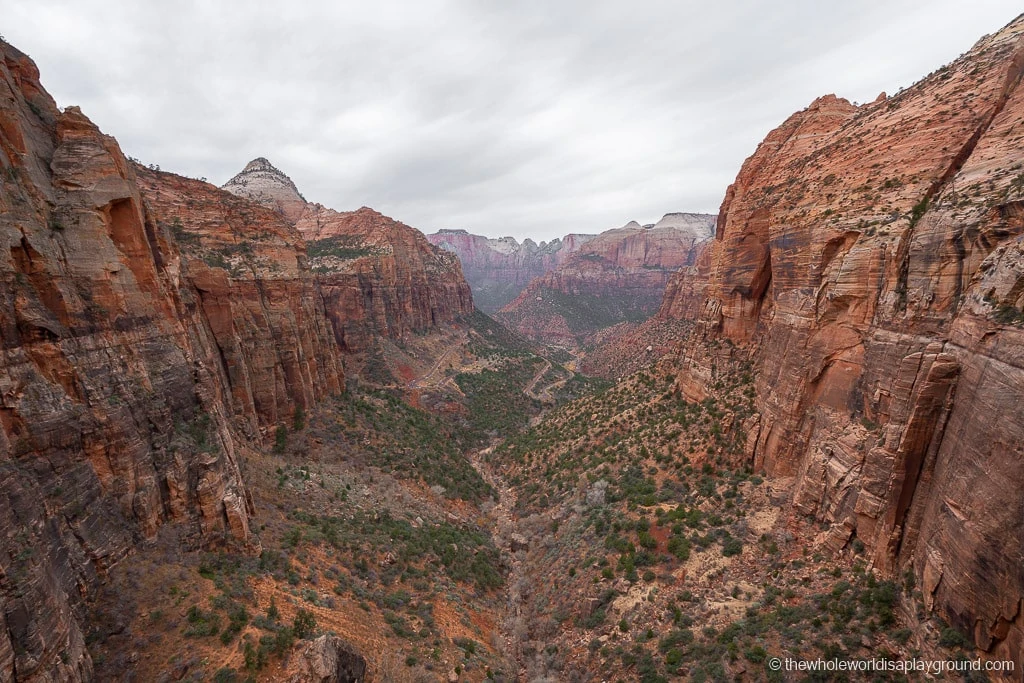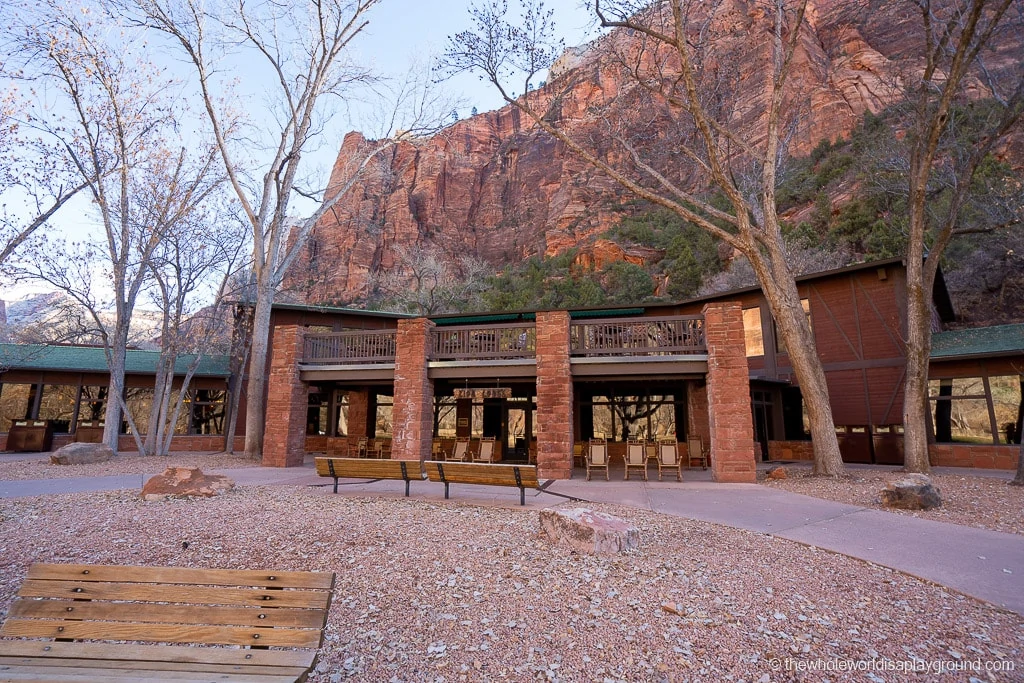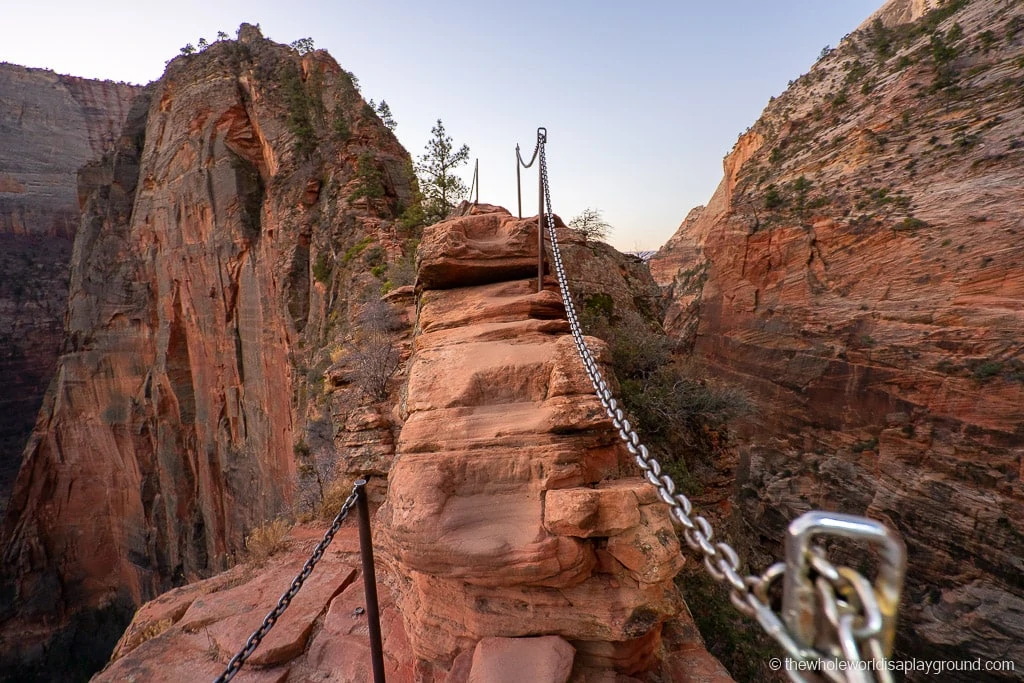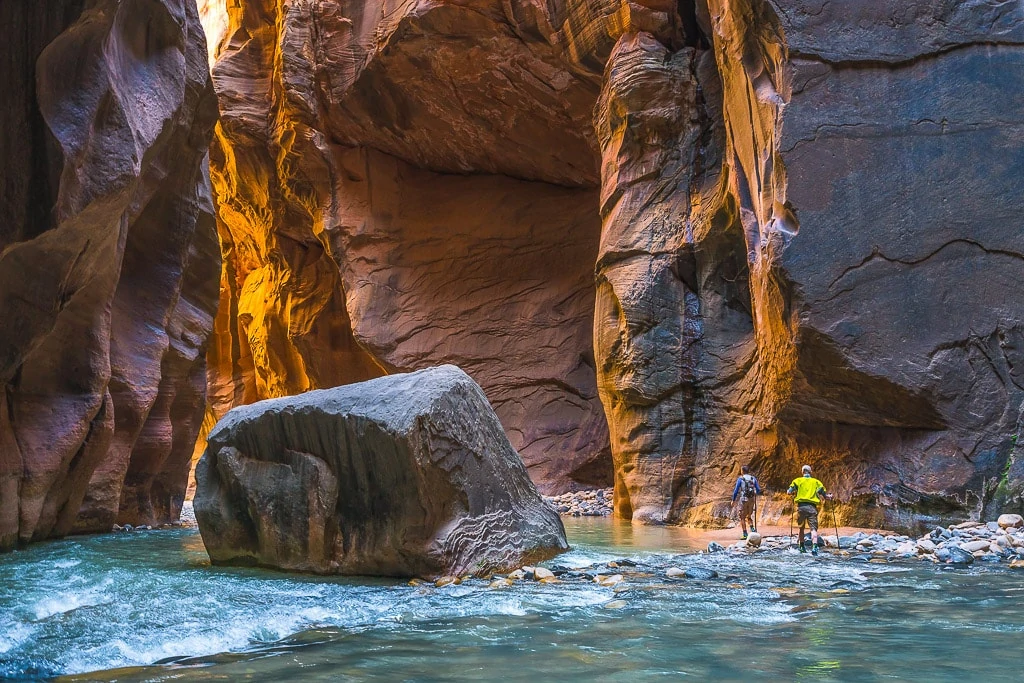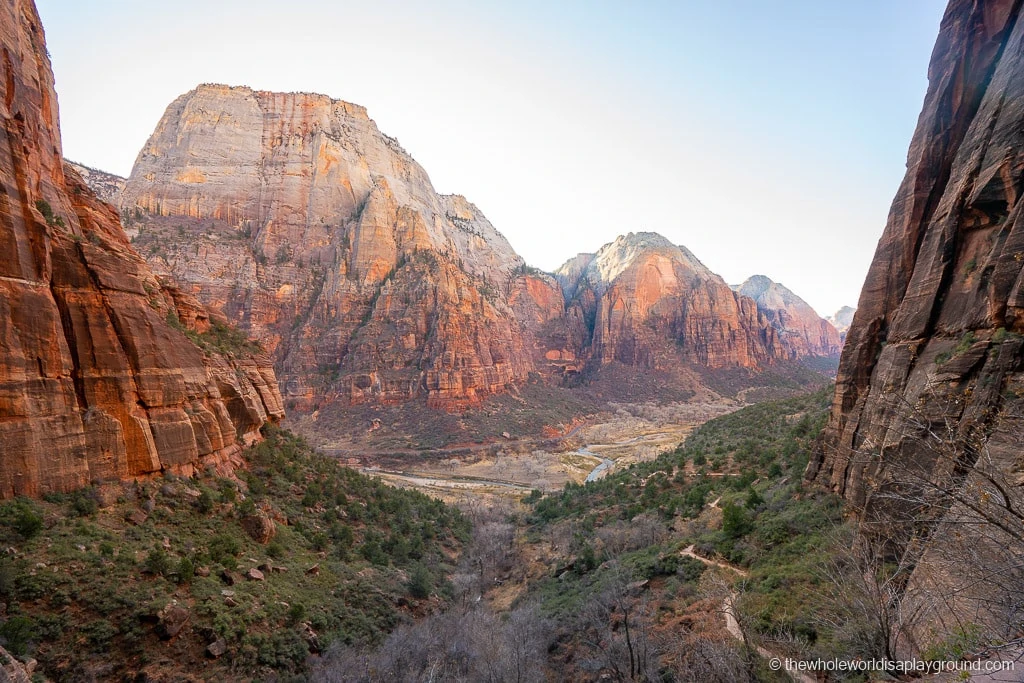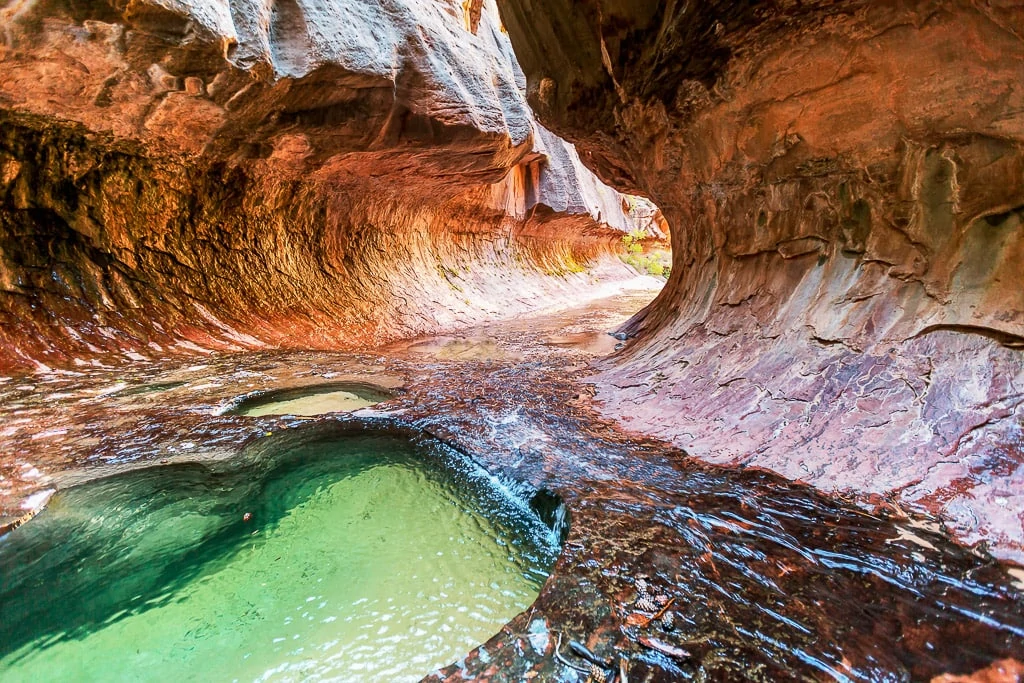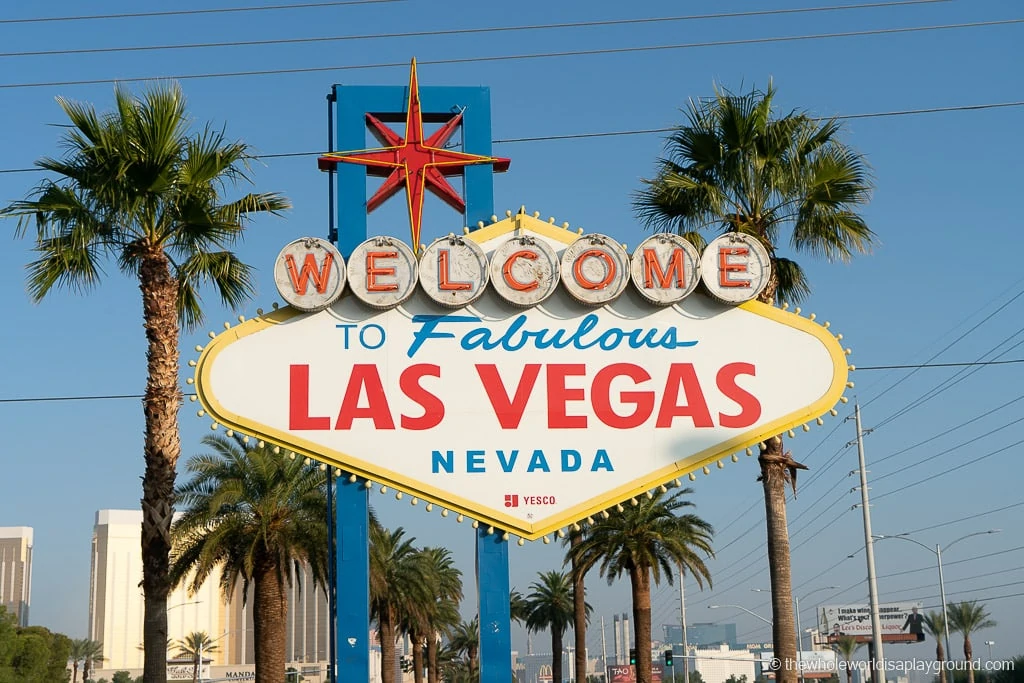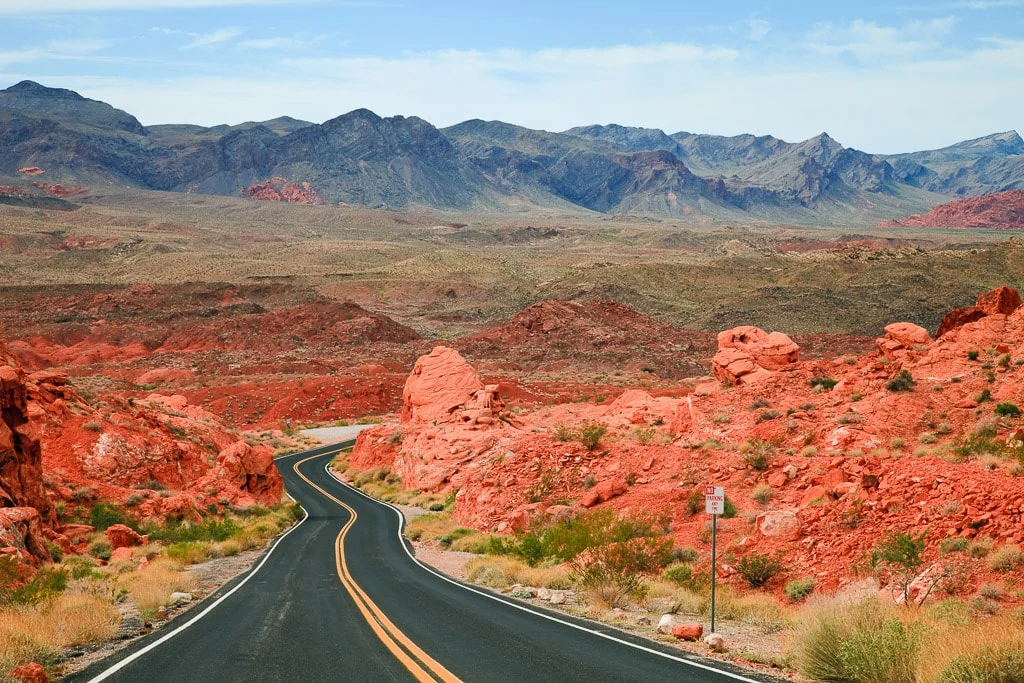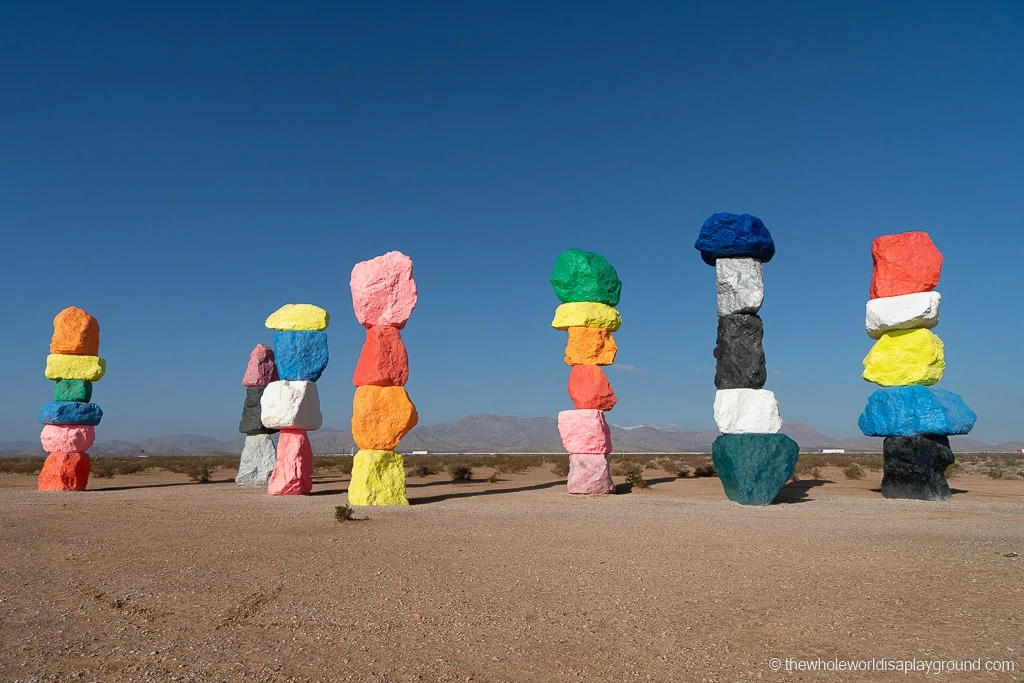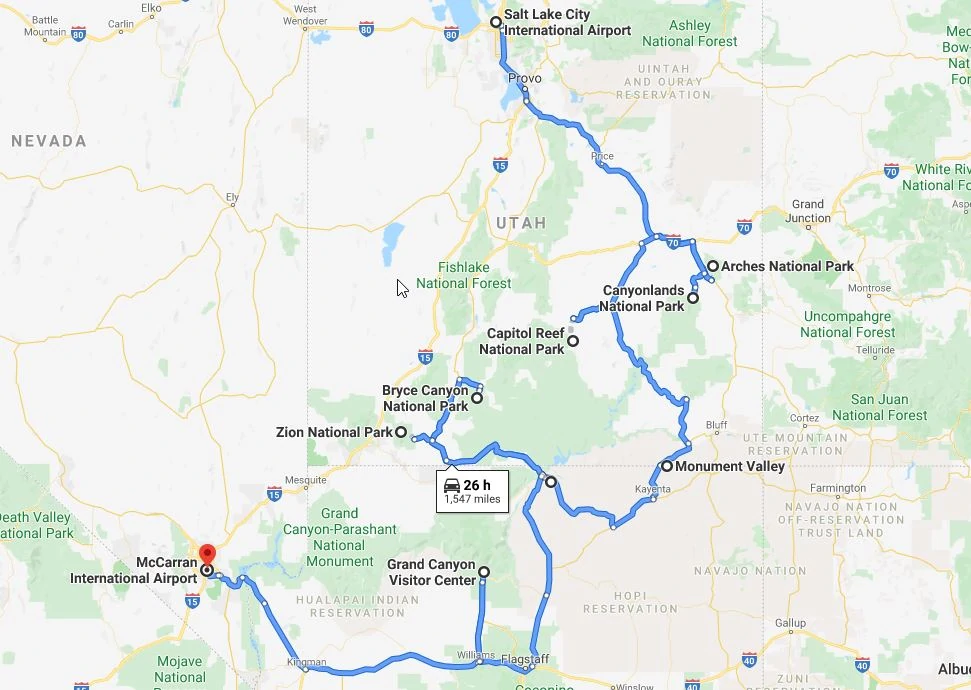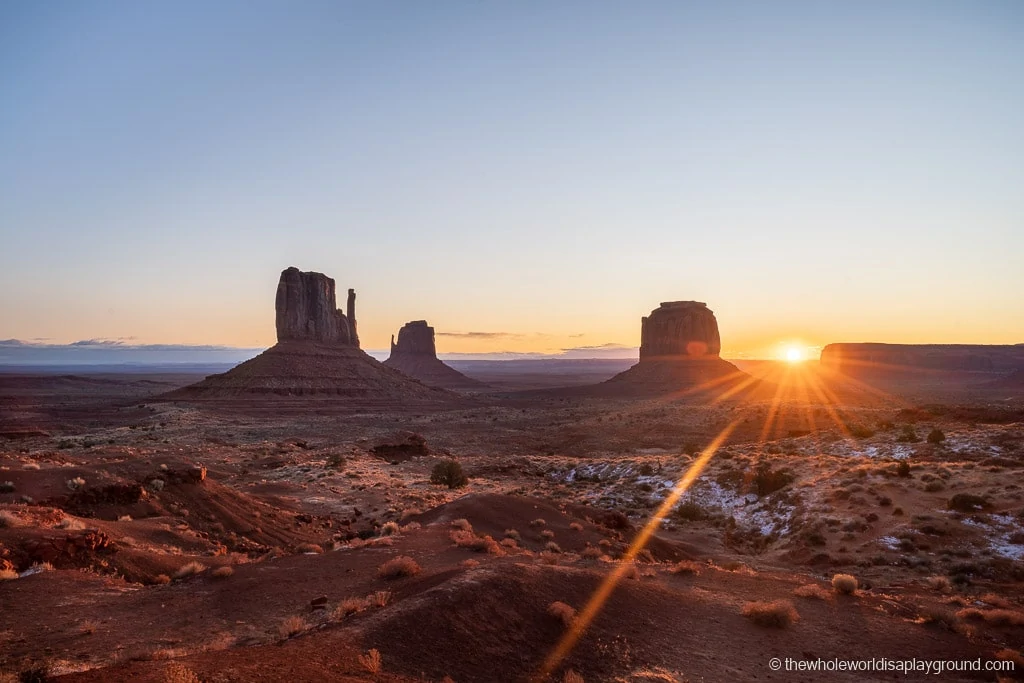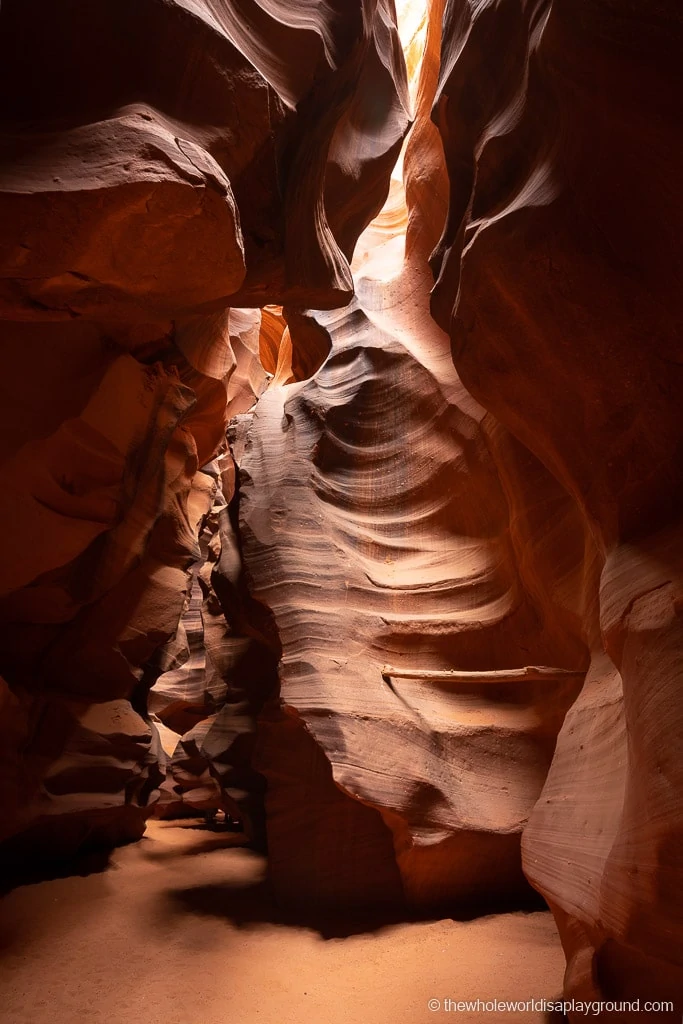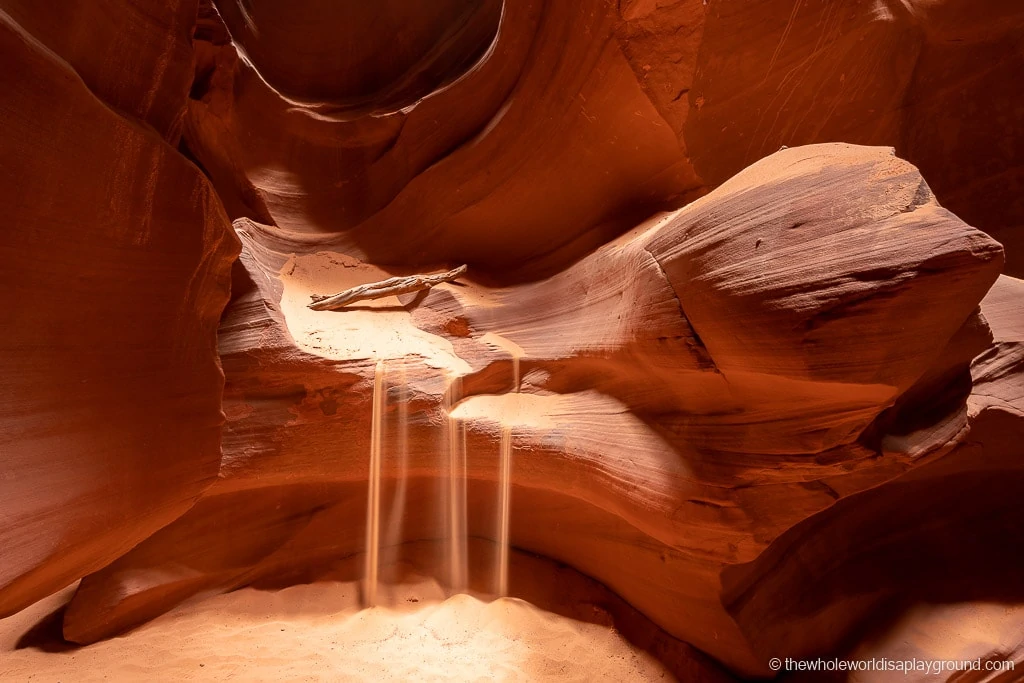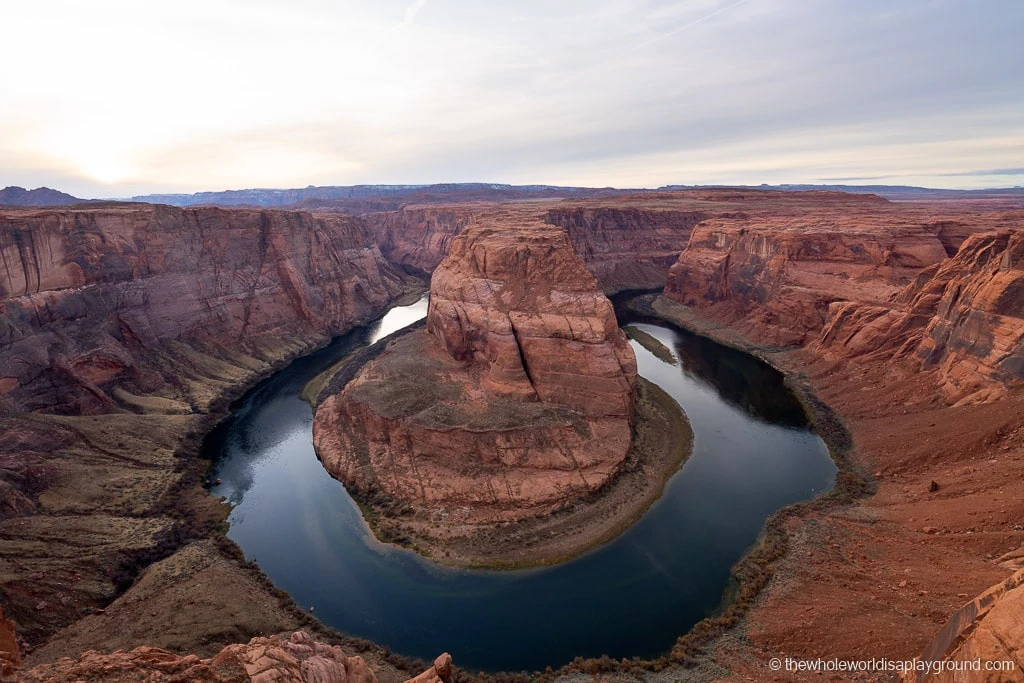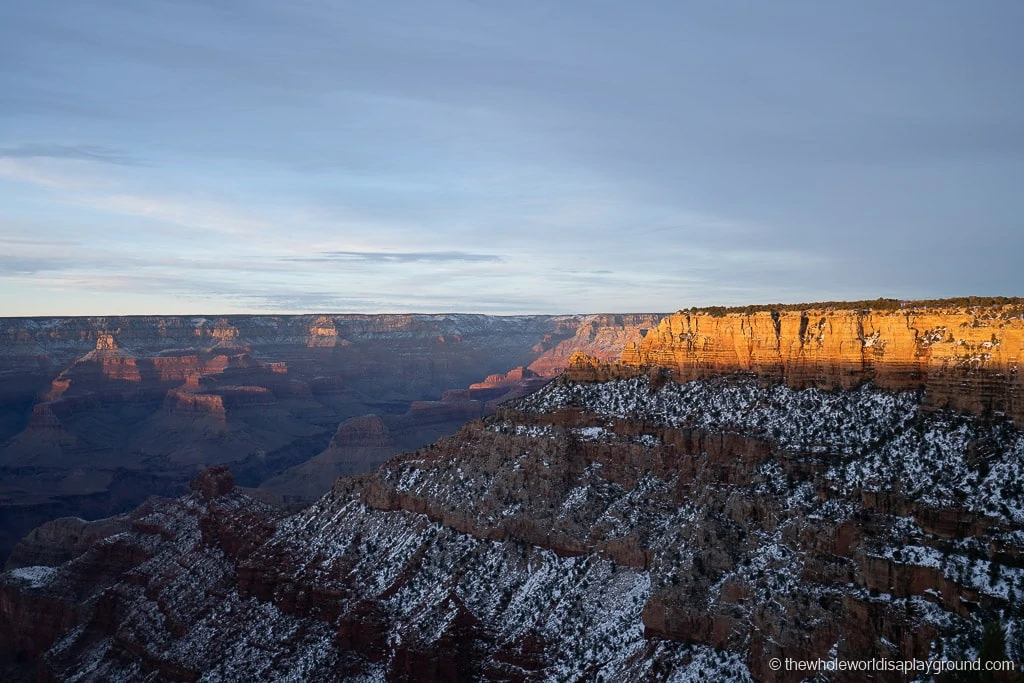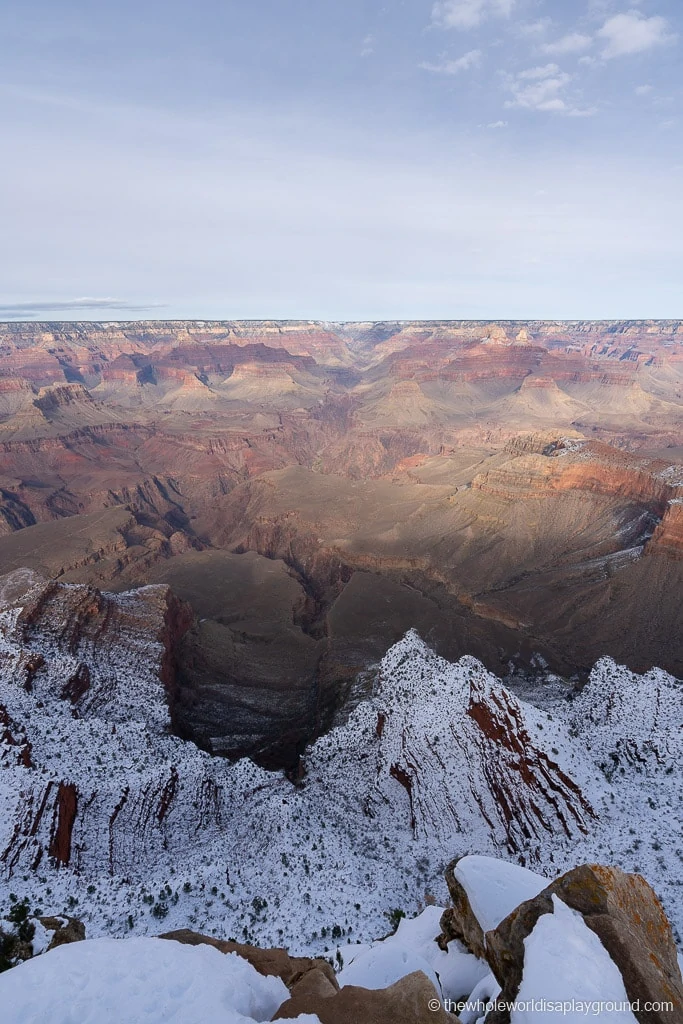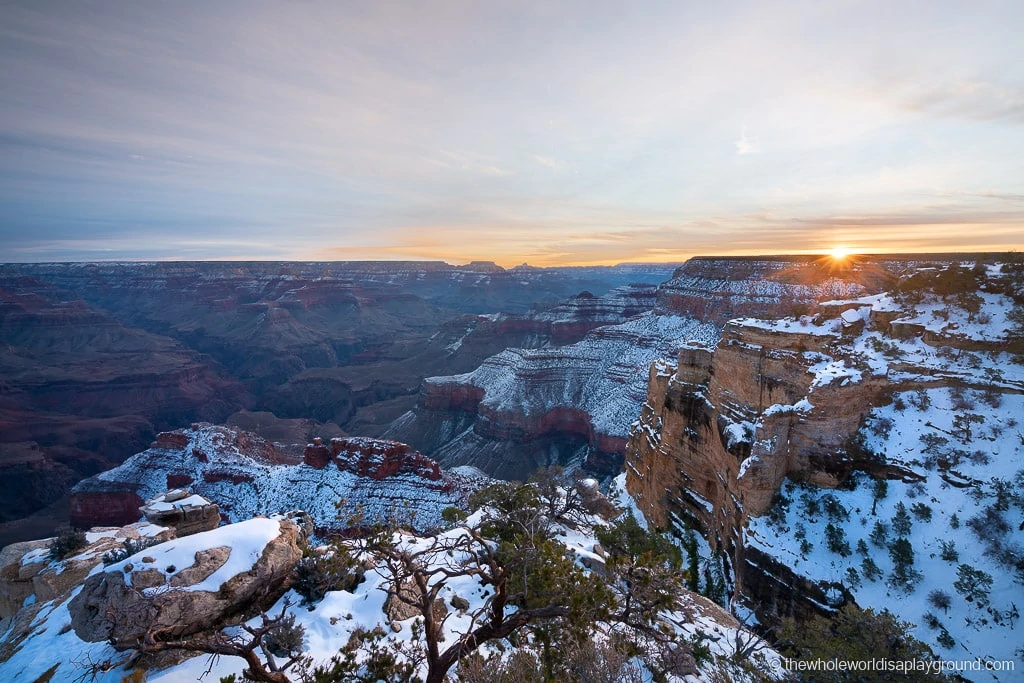Home to the Mighty Five of Arches, Bryce, Canyonlands, Capitol Reef and Zion, a Utah National Parks road trip is an incredible journey. From soaring arches to magnificent rock formations, iconic hikes and dramatic landscapes, there is so much to see and do. For those of you planning your own road trip through Utah we wanted to share our recommended Utah National Parks Road trip itinerary.
Utah National Parks Road Trip tip: we last did this Utah National Parks Road Trip in December 2020 and loved it!
Utah National Parks Road Trip Route
Our map below outlines the location of each of the Mighty Five National Parks and the two most popular arrival and departure points, Salt Lake City and Las Vegas.
Depending on where you are arriving and departing from, there are three options for this Utah National Parks road trip route:
Option 1: Salt Lake City/ Vegas (Our Route)
- Salt Lake City/Las Vegas: flying into Salt Lake City and out of Las Vegas (or vice versa) means you can cover the five Utah National Parks with the least amount of driving.
Route: Salt Lake City – Arches – Canyonlands – Capitol Reef – Bryce – Zion – Las Vegas
Utah itinerary tip: this is our recommended route if you want to cover the Utah Mighty Five in 7 days.
It’s also possible to travel in a loop from Las Vegas or Salt Lake City if you prefer to start and end your trip in the same location:
Option 2: Las Vegas Loop
- Las Vegas loop: Las Vegas is a popular arrival and departure airport for international visitors and the five National Parks can easily be visited in a out and back drive from Las Vegas. If you have extra days, you could even take a detour back to Vegas via Monument Valley and Antelope Canyon.
Route: Las Vegas – Arches – Canyonlands – Capitol Reef – Bryce – Zion – Las Vegas
Utah National Parks road trip tip: we prefer getting the long drive to Arches out of the way first and having lots to see on the way back to Vegas. You can also stop at a few of the parks on the way to Arches and cover the remaining ones on the way back or visit all the parks en route to Arches and do the long drive on the way back to Vegas.
Option 3: Salt Lake City Loop
- Salt Lake City loop: Salt Lake City is another popular option and it’s relatively easy to take in all five National Parks.
Route: Salt Lake City –Zion – Bryce – Capitol Reef – Canyonlands – Arches – Salt Lake City
Utah National Parks road trip tip: again, we prefer getting the long drive out of the way first and having lots to see on the way back to Salt Lake City but it’s totally down to personal preference.
How to get around Utah National Parks
We rented a car to explore the Utah National Parks. Driving is easy and having your own car gives you the flexibility to travel at your own pace and follow your own schedule.
We’re huge fans of road trips and have driven rental cars in over 40 countries. We recommend using Booking.com to reserve your car. They have the best selection and prices that we’ve found – check prices here!
Utah National Parks road trip tip: we picked up and dropped off our rental car in different locations and paid a small one way rental fee. It’s usually cheaper to rent and return the car in the same location.
Best Time to Visit the Utah National Parks
This Utah National Parks Road trip is possible all year round. Although there is the risk of snow, most of the trails remains accessible throughout the winter months.
- Spring and Fall: Moderate temperatures make Spring and Fall a fantastic time to visit the Mighty 5. May to September are typically the busiest months so expect high crowds.
- Summer: summer is hot in Utah! Daytime temperatures often exceed 100°F and hiking can be challenging in the middle of the day.
- Winter: low crowds and low but manageable temperatures make December one of our favorite times to visit the Utah National Parks – we loved our most recent Utah Nation Parks Road Trip in December 2019. The biggest downside of a Winter visit is the shorter hours of daylight and the risk of weather-related trail closures –read more about our visits to Arches National Park in Winter, Zion National Park in Winter and Bryce Canyon National Park in winter.
What to pack for Utah National Parks Road Trip
- Hiking books and socks: make sure your hiking boots are worn in before hitting the Utah trails!
- Water Bottle/hydration pack – Elaine uses a Nalgene Tritan water bottle and Dave a Takeya stainless steel bottle. We also have a Teton hydration pack for longer hikes.
- LED headlight: if you’re planning early morning or late evening walks then bring a headlamp. We used this Vont LED headlight when we set off before sunset and when we ventured out late in the evening to check out the night skies.
- Yaktrax: if you are visiting the Utah National Parks in Winter Yaxtrax are amazing for navigating the icy trails. We used ours across all the Utah National Parks during our Winter 2019 trip – our favorites are these Yaktrax Walk Traction Cleats.
- Sunscreen, sunhat, sunglasses, light rain jacket: for summer visits
- Hiking jacket, hat and layers: for winter visits
- Hiking Poles: we don’t use hiking poles but we saw lots of hikers using them on the trails – these TheFitLife Nordic Walking Trekking Poles are a great option for Utah.
- Zion Narrows gear: specialist gear is optional in summer. In winter, you will need dry gear as the water is freezing. Many hikers rent Narrows day packages from Zion Outfitters (located just outside the park) which include boots, socks and a wooden hiking stick in summer and dry pants in winter.
Utah National Parks Road Trip: Daily Itinerary
We’ve detailed our Salt Lake City to Las Vegas itinerary. It’s easy to reverse this or switch it up to a Las Vegas or Salt Lake City loop using the recommended routes above.
Route: Salt Lake City – Moab (Arches and Canyonlands) – Capitol Reef – Bryce – Zion – Las Vegas
We recommend a minimum of 7 days for this itinerary. There’s very little downtime in a 7 day itinerary and it is intense but, if you want to see all 5 Utah parks, this will allow you to do so. You can pick and choose from the stops listed if you want a more relaxed trip. If you have longer, the itinerary can easily be stretched out by spending more time in each park and adding stops at the other highlights we’ve detailed in our extended route.
We’ve included our recommended 7 day itinerary plus options for extending to a 14 day itinerary below.
7 Day Utah National Parks Road Trip Itinerary
Day 1: Arrive in Salt Lake City, drive to Moab
Day 2: Arches National Park
Day 3: Canyonlands National Park and drive to Capitol Reef
Day 4: Capitol Reef and drive to Bryce Canyon
Day 5: Bryce Canyon and drive to Zion
Day 6: Zion National Park
Day 7: Drive to Las Vegas
Day 1: Arrive in Salt Lake City, Drive to Moab
Drive time: the drive time between Salt Lake City International Airport and Moab is around 3 hours 45 minutes.
The small town of Moab is a fantastic base for both Arches National Park and Canyonlands National Park. There are lots of accommodation and food options within Moab and both parks are easily accessible from the town. The remarkable Dead Horse Point State Park is also easily reached from Moab.
Since many visitors fly to Salt Lake City and then have a 4 hour drive to Moab we’ve left today free from any National Park adventures.
Utah National Parks Road trip tip: if you arrive in Moab relatively early then pick one of our trails from Canyonlands or Arches. If you arrive by early afternoon you can always tick off Dead Horse Point State Park on the first evening.
Where to stay in Arches National Park/Moab
Most visitors to Arches and Canyonlands stay in the nearby town of Moab. With its small town feel and easy accessibility to Arches National Park, Canyonlands National Park and Dead Horse Point State Park, we loved our stay in Moab.
- Red Cliffs Lodge: set against the spectacular backdrop of towering red cliffs and the mighty Colorado River, Red Cliffs Lodge has a homely feel. Rooms are large and comfortable – check prices now!
- Vacation Rentals: there are some great rental options in Moab. Cottonwoods 57, a modern 3 bedroom rental close to downtown Moab, is lean, well equipped and fantastic option for groups and families – check prices now!
- Devils Garden Campground: Arches only in park accommodation, the Devils Garden Campground has 51 sites. Sites can be reserved up to 6 months in advance from March through October. 25 sites are available on a first come first serve basis during the rest of the year.
Utah National Parks Road Trip tip: If you are planning to visit Arches between April 1 and October 31 2024 please be aware than a timed entry ticket system is now in place that has to be booked before you visit. See our Arches National Park itinerary for more details.
Day 2: Arches National Park
Drive time: 10 minute drive from Moab to the entrance to Arches National Park
Arches National Park is home to over 2,000 natural stone arches. Delicate Arch, which appears on Utah Licence plates, and Landscape Arch, the longest natural arch in the US, are among its most iconic arches.
One day in Arches will allow time to explore many its most popular trails and rock formations.
Start the day with a moderately challenging early morning hike to Delicate Arch (2 to 3 hours). Delicate Arch is instantly recognizable from its appearance on Utah licence plates and is a symbol of Arches.
Delicate Arch is followed by an easy hike to Landscape Arch (1 hour), the largest natural stone arch in the USA. The Landscape Arch trailhead, at the Devil’s Garden parking lot, is a nice spot for a lunch break. There are no food options in Arches so make sure to bring a picnic lunch from Moab.
Utah National Parks Road trip tip: Landscape Arch is part of the Devil’s Garden, a challenging hike which comprises 6 arches. It takes around 3 or 4 hours to complete the entire 7.2 mile hike through Devil’s Garden. If you prefer a challenging hike, you can spend the rest of the morning exploring Devil’s Garden or, if you have two days, return the next morning.
Landscape Arch is located at the very north end of the park so, after Landscape Arch/Devil’s Garden, you will start making your way towards the park entrance. The first stops, Skyline Arch and Sand Dune Arch, are easy and short trails and are followed by quick stops at Balanced Rock and the Fiery Furnace viewpoint (15 minutes each).
Utah National Parks Road trip tip: Fiery Furnace, a maze of slot canyons, is a permit only trail. Without a permit, visitors are only allowed as far as the viewpoint.
The next stop is The Windows section of the park. The Windows is an easy trail that passes the North and South Window arches and Turret Arch. The beautiful Double Arch is a short trail in the opposite direction to the Windows and is totally worth the quick detour (1 to 1.5 hours).
Finish up with stops at the Courthouse Tower and La Sal Mountain Viewpoints (10 minutes each) before returning to Moab to eat and sleep.
Utah National Parks Road trip tip: for a more detailed Arches National Park itinerary, check out our recommended 1 and 2 day Arches itineraries here.
Day 3: Canyonlands National Park and drive to Torrey for Capitol Reef
Drive time: 30 minute drive from Moab to the entrance of the Island in the Sky district of Canyonlands National Park. It is a further 20 minute drive between Canyonlands and Dead Horse Point State Park. After visiting Canyonlands, it’s a 2 hour 45 minute drive to Torrey where we will stay overnight while exploring Capitol Reef National Park.
Canyonlands National Park is the largest of Utah’s National Parks and its vast and dramatic landscape comprises colorful canyons, buttes and mesas. Canyonlands is divided into four distinct districts: Island in the Sky, The Needles, The Maze and the rivers. The districts are quite far apart so, with one day, we will focus on exploring the popular Island in the Sky district.
Start the day with a hike to Mesa Arch, the most photographed arch in Utah. Mesa Arch sits perched on a rock ledge and perfectly frames the surrounding canyons, jutting rock formations and the Le Sal mountain range in its backdrop (1 hour).
Utah National Parks Road trip tip: we love watching sunrise at Mesa Arch. Even if you arrive at Canyonlands a little later, we recommend starting with Mesa Arch as it is a busy trail.
After Mesa Arch, we start exploring the stops on Grand Viewpoint Road, the main road through Canyonland’s Island in the Sky. We like to drive to the last stop on the Island of the Sky scenic drive, the Grand View Point Overlook (20 minute drive), and make our way back towards the entrance but you can do it any order you like. The stops on Grand Viewpoint Road include Grand View Point Overlook with its spectacular view of Canyonlands and the Maze and Needles District and the Orange Cliffs Overlook which has a nice view of the surrounding cliffs and desert.
If you are in the mood for a hike there are two trails at the next stop on Grand Viewpoint Road: White Rim Overlook and Gooseberry Trail. White Rim Overlook is an easy 1.8 mile round trip with views similar to the Grand View Point Overlook while the Gooseberry trail is steep 5.4 mile round trip which descends down the rim.
Utah National Parks Road trip tip: White Rim Overlook takes around an hour while the Gooseberry trail takes at least 3 hours given the steep descent and climb out.
The next 3 stops are viewpoints and only require a quick stop. Buck Canyon Overlook showcases the dramatic desert landscape and is one of our favorite viewpoints. Candlestick Tower Overlook offers spectacular views of the Wingate sandstone towering over the landscape. The Green River Overlook demonstrates the power of nature where the Green River has cut through the Canyonlands landscape.
There are a few more hiking options as we head north onto the Upheaval Dome Road.
Aztec Butte is a 2 mile round trip (1 hour). There are granaries which were old storehouses used by the ancestral Puebloans on the trail.
The massive sandstone Whale Rock is visible from the parking lot and you can hike the 1 mile to the top (30 minutes) for views over the park.
Upheaval Dome, where layers of rock are pushed up into a dome shape, is thought to have been created by either a meteor or a salt bubble rising to the surface. Either way it’s fascinating and the 1.8 mile hike (1.5 hours).
False Kiva: a 1.9 mile moderate trail with a steep final scramble which leads to a ceremonial stone circle framed by an alcove set against an incredible Canyonlands backdrop. Make sure to save a copy of the trail as phone access is limited and mind your footing due to the cliff. To access the trail park at the Alcove Spring parking lot on Upheaval Dome Road and walk back to the log piles. Since 2018, it’s only possible to view the stone circle from a few meters back – due to vandalism the alcove is no longer accessible and it’s forbidden to enter the stone circle due to the significance of the site.
As you return to Grand View Point Drive there is one final viewpoint, Shafter Canyon Overlook, at the Island of Sky Visitors Center. The viewpoint overlooks the Shafter Canyon and the Shafter Canyon Road with its switchbacks.
Utah National Parks Road trip tip: depending on how many of the viewpoints and trails you stop at in Canyonlands, you might have time to make the 25 minute drive over to Dead Horse Point State Park. The Dead Horse Point Overlook is spectacular and there are some nice trails if you want to explore further. It takes almost 3 hours to drive from Canyonlands to Torrey so remember to leave plenty of time to make the journey.
Day 4: Capitol Reef National Park
Drive Time: after exploring Capitol Reef it takes 2 hours to drive to Bryce, the town next to Bryce Canyon National Park, where we spend the night.
With its endless rugged landscape and colorful desert rock, Capitol Reef National Park is a magical place to visit. The defining feature of Capitol Reef is Waterpocket Fold, a 100 mile long buckle in the earth’s surface along which erosion and uplift have created deep narrow canyons and fascinating rock formations.
Where to stay in Torrey/ Capitol Reef
Most visitors to Captiol Reef stay in the town of Torrey, the gateway to Capitol Reef National Park. It is located 8 miles from the West Entrance to the Park.
- Capital Reef Resort: located at the entrance to Capitol Reef guests can stay in a wagon, tents, a cottage or hotel rooms. A fantastic option for exploring the park – check prices here!
- Austin’s Chuckwagon Lodge and General Store: the old school motel is clean and well maintained with a general store on site if you need any essentials. There’s also a pool and hot tub – check prices here!
- Fruita Campground: a 71 site campground in the park itself. Sites are released on a 6 month rolling basis and are first come first served outside of peak times.
Capitol Reef is an easy park to explore and, since we’re driving to Bryce this evening, this one day itinerary focuses on the highlights.
Highway 24 cuts through the park and Panorama Point, Goosenecks Overlook, and Sunset Point are awesome stops. Take a detour onto the Capitol Reef Scenic Drive, an 8 mile scenic drive, which showcases the most magnificent scenery in the park.
Hickman’s Bridge, a 1.8 mile trail (1.5 hours) which leads to a natural stone arch, is one of our favorite hikes when we have limited time in Capitol Reef.
After a 2 hour drive from Capitol Reef you will arrive in Bryce, the town adjacent to Bryce Canyon National Park.
Day 5: Bryce Canyon National Park
Drive time: after exploring Bryce Canyon it takes around 2 hours to reach Springdale, the town adjacent to Zion National Park.
Where to stay at Bryce Canyon
Most visitors to Bryce Canyon stay in Bryce which is located close to the park entrance.
- Best Western Plus Bryce Canyon: one of the newer options in Bryce, just a few minutes drive from the park entrance. Rooms are spacious and and there is an outdoor pool. We’ve stayed multiple times – check prices here!
- Vacation Rentals: One of our favorites, Under the Rim, is cosy, clean and has incredible views – check prices here!
- The Lodge at Bryce Canyon: in park lodge within walking distance of the trails and viewpoints. Accommodation is a mix of cabins, lodge and hotel rooms. Rustic but comfortable – check prices here
- Camping: there are two campsites in the park. North Campground has 99 sites available on a first come, first serve basis while Sunset Camping has 100 sites which are reservable on a 6 month rolling period in peak season.
With its signature hoodoo rock columns Bryce Canyon National Park is truly magnificent. Bryce Canyon is a series of natural amphitheaters carved into the edge of a high plateau and there are some spectacular viewpoints along the upper rim.
It takes around an hour to drive from the park entrance to the very southern viewpoints. We stopped at each in order: Sunrise Point, Sunset Point, Inspiration Point, Bryce Point, Natural Bridges, Rainbow Point and Yovimpa Point. Sunrise, Sunset and Bryce Point are among our favorites.
Utah National Parks Road Trip tip: If you’re driving to Zion this evening then make sure to allow for the 2 hour drive between Bryce and Springdale.
If you start early, you might have time for a short hike: the Queens Garden trail and the Navajo Loop trails are the most popular and our favorite is the combination of both trails (1.5 hours). It includes Sunrise and Sunset Point, descends into Wall Street and the canyon floor and back up to Sunset Point.
Day 6: Zion National Park
Located adjacent to the town of Springdale in Utah, Zion is home to soaring red sandstone cliffs, iconic hikes and stunning wildlife. Zion is split into two sections: Zion Canyon and Kolob Canyon. In the Zion Canyon section red and white cliffs soar over the Virgin River and valley floor. The finger canyons and red Navajo sandstone cut through the north west section of the park in the more remote Kolob Canyon section of the park.
Where to stay in Zion
Zion has both in-park accommodation and out of park options in Springdale which is adjacent to the main south entrance to the park. Check out our full guide for the best places to stay in Zion.
Springdale: given the shuttle system, it is just as easy and likely less expensive to stay in Springdale. Springdale has easier access to food options and more modern lodgings and is also within cycling distance of the Zion Canyon trails.
- Cable Mountain Lodge: great selection of rooms, excellent food and an outdoor pool overlooked by the Zion Watchman. Located adjacent to the Zion Visitors Center, you can hop on the park shuttle bus and reach any of the trails within minutes. Our Zion favorite – check prices now!
- Flanigan’s Inn: 10 minutes walk from the Zion entrance and located on a Springdale Shuttle stop, Flanigan’s Inn is a reasonably priced option with good sized clean rooms, a pool and a hot tub –– check prices now!
In Zion: we stay in the park if we want to camp or get an early start on Angels Landing as the trail head is within walking distance of Zion Lodge.
- Camping: There are two campsites, Watchman Campground and South Campground, within the park. Both campsites are located near the visitors center at the South entrance. Watchman sites are released for reservation on a 6 month rolling basis while the South Campground are on a 14 day rolling basis.
- Zion Lodge: located deep within the park the historic lodge offers a mix of cabins and hotel rooms. We’ve stayed in the Lodge and it’s a nice traditional option although expensive – check prices here!
Utah National Parks Road trip tip: The main section of the park, Zion Canyon, is only accessible via shuttle bus outside of the lowest crowd days in the park. The trail heads for many of the hikes are located along the Shuttle Bus route. The shuttle service in Zion is usually very efficient although, on the busiest days in the park, you may need to allow additional time to queue. At the moment, tickets must be reserved in advance for the shuttle. For a more detailed explanation on your options for navigating the park check out to guide to Zion National Park.
Our one day Zion itinerary options showcase some of the best features of Zion National Park and are a great introduction to its trails:
Zion itinerary 1: the iconic hikes
Zion has two iconic hikes, the water based Narrows and the adrenaline inducing Angels Landing. Many visitors to Zion want to tick off both these hikes. Although it will be a long day, it is possible to conquer both Angels Landing and the Narrows in a single day in Zion.
Set your alarm clock early and take the very first shuttle into Zion to Shuttle Stop 6, the Grotto. This is where the Angels Landing hike begins. It follows the West trail to Scout Lookout and then switches to the Angels Landing trail for the final 500 foot ascent to the summit of Angels Landing. Angels Landing, and Scouts Lookout, are challenging with a total ascent of 1,500 feet and spectacular. Read more on our Angels Landing hike and the new reservation requirement – click here!
Utah National Parks road trip tip: Angels Landing is steep and narrow and requires a strong head for heights and extremely careful footing.
Take the shuttle to Stop 9, the Temple of Sinawava, from which the Riverside Walk trail leads to the Narrows. Always make sure to check in with the rangers for conditions on the trail as flash floods present a huge danger on the Narrows trail.
The full Narrows hike is 9.4 miles out and back but you turn around at any point if it is getting late and you want to return to the shuttle stop. Mystery Falls is 1.5 miles from the shuttle stop, the iconic Wall Street with its narrow passageways and towering canyon walls is 2.5 miles. Big Springs, the furthers point on the hike, is 4.7 miles out.
Utah National Parks road trip tip: depending on the time of year, you may need some specialist gear to hike the Narrows – lots of visitors rent sticks, boots and socks and wet gear from the Zion Adventure Company. Summer is a great time of year for hiking the Narrows when the water levels are lower and the temperatures warmer. If you need specialist gear, rent it the evening before and take it with you on the Angels Landing hike.
Zion itinerary 2: a mix of the best hikes in Zion
Start the day on Riverside Walk (shuttle stop 9, the Temple of Sinawava), a leisurely 2 mile stroll along the Virgin River. The Narrows begins at the end of Riverside Walk so, in summer, you can easily include a small portion of the Narrows in your hike. The hike out to Mystery Falls is a nice introduction to the Narrows (1.5 hours).
Next, take the shuttle to Stop 6, the Grotto. From here, follow the West Rim trail to Scout Lookout for spectacular views of Zion Canyon below and Angels Landing up ahead. With 1,000 foot of elevation gain and demanding switchbacks on the way to Scout Lookout this is a strenuous hike! (2 hours). Read more on our Scout Lookout hike – click here to read!
A rest break is well deserved after Riverside Walk and Scout Lookout. If you bring lunch from Springdale then the Grotto trail head has a nice picnic area. Zion Lodge, stop 5 on the shuttle, serves food and also has a nice grassy area for a picnic stop. When lunch is done, make your way back to you vehicle in anticipation of an afternoon exploring the east side of the park.
It takes around 20 minutes to drive over to the east of the park where the Canyon Overlook trail is located. It follows the Zion – Mount Carmel Highway, one of our favorite things to do in Zion. Continue a little further past the Canyon Overlook trail head and make a stop at Checkerboard Mesa, a rock with a unique criss cross pattern. Canyon Overlook is an easy 1 mile trail with spectacular views of the Zion Canyon (1 hour). Read more on our Canyon Overlook hike – click here to read!
Utah National Parks road trip tip: for a more detailed Zion National Park itinerary, check out our recommended 1,2 And 3 day Zion itineraries here.
Day 7: Drive to Las Vegas
Drive time: it’s a 2 hour 30 minute drive between Zion and Las Vegas.
Depending on your plans or flight time, you might have time to make a stop at the Valley of Fire State Park located 50 miles north of Las Vegas. When it catches the sun the park’s red Aztec sandstone illuminate the valley and it looks like it is on fire, hence the name Valley of Fire.
You can also check out Seven Magic Mountains, a public art installation just south of Las Vegas. Seven Magic Mountains is made up colorful neon boulders stacked in seven giant towers and it’s fun, free and colorful!
You can check out our guide to the National Parks near Las Vegas for more inspiration.
Extending the Utah National Parks Road Trip Itinerary
If you have more time then pick and choose your favorite stops from our 14 day itinerary
- Day 1: Arrive in Salt Lake City, drive to Moab
- Day 2 and 3: Arches National Park
- Day 3: Canyonlands National Park
- Day 4: Dead Horse State Point and drive to Capitol Reef
- Day 5: Capitol Reef and drive to Monument Valley
- Day 6: Monument Valley and drive to Page, Arizona
- Day 7: Antelope Canyon and Horseshoe Bend
- Day 8: Drive to Bryce Canyon
- Day 9 and 10 : Bryce Canyon and drive to Zion
- Day 11 and 12: Zion National Park and drive to South Rim of Grand Canyon
- Day 13: South Rim, Grand Canyon National Park
- Day 14: Depart Las Vegas
The extra stops on this extended itinerary include:
Monument Valley
Located on the Utah-Arizona border, Monument Valley is defined by mesas and sandstone buttes towering over the desert landscape. Exploring Monument Valley is a truly magical experience and its sunrises and sunsets are magnificent.
Monument Valley is easy to explore by car and there are lots of viewpoints to enjoy: our favorites include the Three Sisters and John Ford Point.
if you decide to spend some time at Monument Valley make sure to make the 90 minute drive to the Four Corners Monument, the only place in the United States where you can stand in four states at once! It marks the point where Arizona, Colorado, New Mexico and Utah meet.
Where to stay in Monument Valley
- Gouldings Lodge: clean and comfortable with incredible views of Mounument Valley – check prices now!
- The View: in park accommodation comprising a hotel, campsite and cabins. We stayed in the self contained cabins and love waking up to their spectacular sunrise views –check prices now!
Antelope Canyon and Horseshoe Bend
Both Antelope Canyon and Horseshoe Bend are close to Page, Arizona.
Antelope Canyon
The magnificent Antelope Canyon is one of the most visited and photographed slot canyons in the world. Antelope Canyon was formed by a series of flash floods and hot dry temperatures which resulted in the erosion of the sandstone rock through which the canyon now cuts.
Antelope Canyon is located on land belonging to the Navajo Nation and is only accessible via a guided tour. The tours are split better the Upper and Lower Antelope Canyon: we’ve been on both tours and both the Upper and Lower Canyon are spectacular.
Horseshoe Bend
Horseshoe Bend is a picturesque bend, known as an entrenched meander, in the Colorado River. The viewpoint over Horseshoe Bend is accessible via a short hike from the parking lot below and the view over Horseshoe Bend is breath taking.
Where to stay in Page
- Lake Powell Motel: well located retro motel with a variety of room sizes and apartments – check prices here!
- Courtyard Lake Powell: clean and large rooms with outdoor pool. We enjoyed our stay here –check prices here!
Grand Canyon South Rim
Carved over millions of years by the Colorado River, the Grand Canyon is a 1 mile deep canyon which stretches for 277 miles. Surrounded by deep red canyon walls, the vastness of the Grand Canyon is a magnificent sight.
Utah National Parks Road trip tip: for a more detailed Grand Canyon itinerary, check out our recommended 1, 2 and 3 day Grand Canyon itineraries here. If you are undecided on which part of the Grand Canyon to visit, check out our Grand Canyon in one day ideas here.
The Grand Canyon South Rim is most popular with visitors and is easy to access while travelling back towards Las Vegas. The South Rim is also open year round and is the only option for Winter visitors.
A series of viewpoints along Desert View Drive and Hermite Road showcase the vastness of the canyon. Other highlights include the South Kaibab Trail with its incredible viewpoints including Ooh Aah Point.
Where to stay in the Grand Canyon South Rim
- Bright Angel Lodge: there are 5 lodges in the park and they are located in close proximity with access to the park’s shuttle service. We stayed in a cabin in Bright Angel Lodge and love the bright, self contained rooms – check prices here!
- Camping: there are 3 in park camping options. Mather Campground, close to Grand Canyon Village, can be reserved 6 months in advance or is first come, first served in winter. Desert View Campground is located at the quieter east entrance and is first come, first served. Trailer Village RV, located in the Grand Canyon Village, has 111 sites, many of which are full hookup. Reservations can be made 13 months in advance.
- Best Western Premier Grand Canyon Squire: a good option in Tusayan, 10 minutes from the Tusayan entrance to the park – check prices here!
For more on the South Rim, check out our guide to the best viewpoints at the Grand Canyon and the best things to do in the Grand Canyon.
